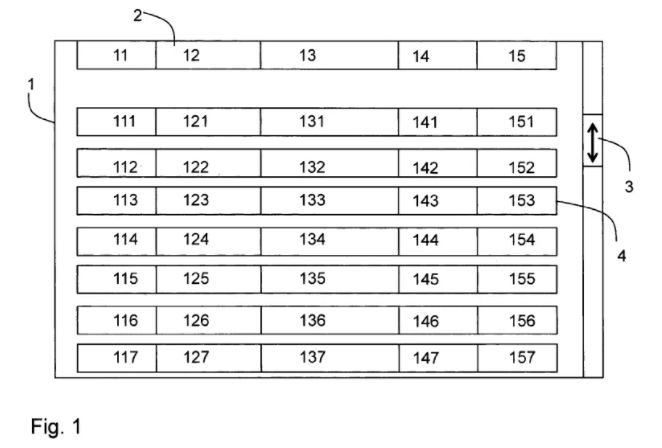- within Media, Telecoms, IT and Entertainment topic(s)
This decision relates to a European patent application that concerns displaying e-mail messages with E-mail read status indication. The Board decided that the rule defining when the flag is to be switched is not based on any technical considerations as it reflects an administrative choice or the user's subjective preferences. Here are the practical takeaways from the decision T 1227/17 (E-mail read status indication/UNIFY) of November 19, 2021, of Technical Board of Appeal 3.5.01:
Key takeaways
A rule defining when the flag is to be switched is not based on any technical considerations if it reflects an administrative choice or the user's subjective preferences.
The invention
The invention concerns displaying e-mail messages on a display. E-mail users face the time consuming and sometimes overwhelming task of going through newly received messages
The invention aims at facilitating this task by indicating the read/unread status of each e-mail in the list of displayed e-mails. The status information is changed from "unread" to "read" when the message text and attachments (if present) have been opened and at least partially displayed to the user. In this way, the user can keep track of which e-mail messages have been read. For subsequent e-mails having the same content, the flag is automatically set to "read" when the user opens the first e-mail in the series of e-mails.

Fig. 1 of WO 2014/056516 A1
Claim 1 (main request)
A method for displaying e-mail messages on a display (1) to a user of an e-mail message viewer, the method comprising:
a) displaying a list of received e-mail messages (1) with a list
entry (4) for each received email message;
b) displaying binary information indicating the read/unread status
of each received email message in the list;
characterized by
c) using a software running on a user's personal computer or
other personal information technology equipment or on a
provider's information technology equipment, which is
permanently monitoring texts or more generally contents displayed
to the user when reading his received messages and automatically
comparing these displayed texts and contents with contents of other
e-mails received by the same user;
d) switching the read/unread status information of each received
first email message from "unread" to "read" by
said software when the text and attachments of this particular
first e-mail message have been displayed at least partially to the
user when opening this particular first e-mail message;
e) switching the read/unread status information of each received
second email message from "unread" to "read" by
said software when the text and attachments of this particular
second e-mail message have been displayed at least partially to the
user when opening a particular first e-mail message.
Is it patentable?
The first-instance Examining Division found that the subject-matter of claim 1 of this request lacked an inventive step over the disclosure of D6 (US 2010/262922).
2.2 D6 discloses, e.g. in paragraph [0029], a method for displaying e-mail messages comprising the step of determining whether the content of an e-mail that has been displayed to the user is found in other e-mails within the same thread. If this is the case, all the e-mails in the thread are marked as "read".
The distinguishing feature over document D6 was the condition when "read" indication was displayed, and the first instance division considered this as merely an administrative rule:
2.3 It is common ground that the subject-matter of claim 1 of the main request differs from D6 in that the "read" indication for an e-mail is set when both the message body and the attachments have been displayed at least partially to the user.
2.4 The examining division found that this difference was merely an administrative rule defining when an e-mail was to be considered as having been read. The difference did not solve a technical problem, and no further technical effect on the computer system could be established. An inventive step was therefore denied.
However, the appellant disagreed and argued technical effect as follows:
2.5 The appellant argued that the automatic setting or switching of flags by software was a technical feature as it produced a technical action and solved the technical problem of informing the user that an email message has already been read.
The Board disagreed with the arguments of the appellant, f
2.6 However, D6 already discloses the automatic switching of a "read" flag. In other words, the technical problem argued by the appellant is already solved in the prior art. Thus the Board agrees with the division that the invention distinguishes itself from the prior art by the rule defining when the flag is to be switched. This rule is not based on any technical considerations. It rather reflects an administrative choice or the user's subjective preferences.
2.7 Since the distinguishing feature of claim 1 does not solve a technical problem by providing a technical effect, it does not contribute to inventive step under the "Comvik approach" (see T 641/00 and Case Law of the Boards of Appeal, 9th edition, I.D 9.1.3). Thus, in conclusion, the Board agrees with the examining division that the subject-matter of claim 1 of the main request lacks an inventive step over D6 (Article 56 EPC).
Therefore, claim 1 was considered not to involve an inventive step.
The appellant tried to amend the claim in the Auxiliary Request
as " when the text and attachments of this particular
first e-mail message have been displayed at
least partially
completely to the
user."
However, even such an amendment did not convince the Board which decided that the additional feature of the first auxiliary request concerns the same type of administrative rule as the main request. Thus, it would not contribute to inventive step either.
Therefore the appeal is dismissed and the application was refused.
More information
You can read the whole decision here: T 1227/17 (E-mail read status indication/UNIFY) of November 19, 2021, of Technical Board of Appeal 3.5.01
The content of this article is intended to provide a general guide to the subject matter. Specialist advice should be sought about your specific circumstances.
[View Source]

